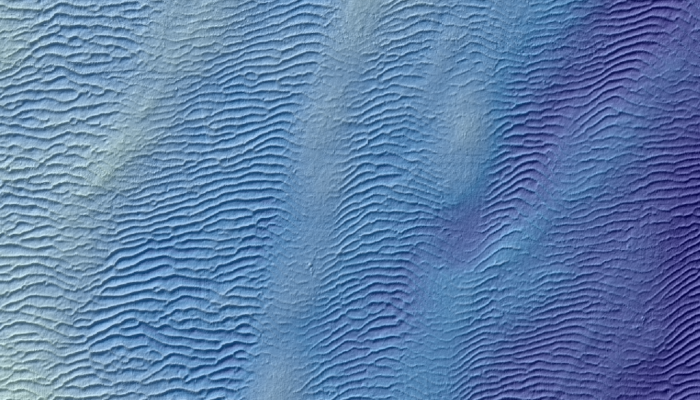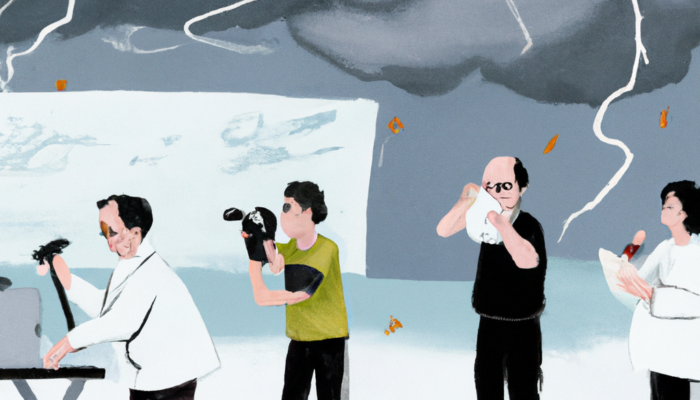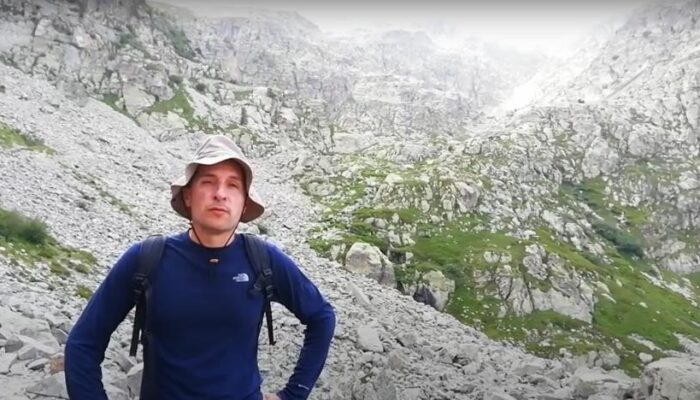The Must-Read paper by Bond et al. (2007) is a truly original piece of work, focusing on the conceptual uncertainty that occurs when earth scientists carry out a geological interpretation on data with limited resolution and/or spatial coverage. In this example it is about an interpretation of seismic reflection data (Fig. 1), but it can be applied to other situations as well. Conceptual uncertaint ...[Read More]
Geomorphology
A Day in the Life – Bartosz Kurjanski
This blog post is part of our series: “A day in the life of a geomorphologist” for which we’re accepting contributions! Please contact one of the GM blog editors, Emily or Emma, if you’d like to contribute on this topic, or others. by Bartosz Kurjanski, Lecturer, University of Aberdeen, UK Twitter: @iceice_bartek | Email: bkurjanski@abdn.ac.uk Shifting sands… but underwater. Hi, my name is ...[Read More]
Hydrological Sciences
Do-It-Yourself (DIY) in Geoscience Miniseries – Part 1: Microcontrollers
We geoscientists need all different kinds of data: soil moisture, water-levels, snow height, radiation, precipitation height and the list goes on. However, the devices we need to generate that data are often too expensive, not available or even don’t exist. Therefore, it’s sometimes necessary to build them yourself (like many geoscientists do – those who annually present their senors p ...[Read More]
Geodynamics
Call for Applications: Early Career Scientist Representative (GD Division)
The Geodynamics Division (GD) is looking for an enthusiastic geodynamicist to take up the position of Early Career Scientist (ECS) representative for 2024-2026! Our current ECS representative, Megan Holdt, will be handing over this position at EGU24. This role is a fantastic opportunity to get involved in EGU, contribute to building the geodynamics community and create a welcoming environment for ...[Read More]
Geochemistry, Mineralogy, Petrology & Volcanology
EGU GMPV Campfires – Thursday 14th December 4 pm CET
Mark your calendar! The next edition of the Geochemistry, Mineralogy, Petrology and Volcanology division’s ECS talks – the Campfires – will be back on Thursday 14th December at 4pm CET on Zoom. This edition will be a Scientific Campfire, during which three early career scientists will present their latest work to the community. Our speakers for this edition are: Shreya Kanakiya ̵ ...[Read More]
Nonlinear Processes in Geosciences
Bridging Mathematics and Climate Science: the AMS MRC programme for June-July 2024
The American Mathematical Society’s Mathematics Research Communities (MRC) continues to be a beacon for early-career mathematicians seeking professional development. This esteemed program offers opportunities to hone collaborative research skills, cultivate networks within active research domains, and benefit from mentorship by leaders in the field. As part of the MRC initiative, the upcoming conf ...[Read More]
Cryospheric Sciences
UndercoverEisAgenten – Permafrost, drones and young explorers investigating Arctic change
The “UndercoverEisAgenten” project takes us on a drone journey over the ever-changing permafrost landscapes. Initiated by the Alfred Wegener Institute (AWI) for Polar and Marine Research, the German Aerospace Center’s (DLR) Institute of Data Science, and the Heidelberg Institute for Geoinformation Technology (HeiGIT), this venture is about more than just capturing images. It̵ ...[Read More]
Geodynamics
The Sassy Scientist – The crit fail
While we are getting this close to unwrapping our advent calendars, here is a question that will keep us away from the first chocolate for a bit. Rowan asks: How do I tell my partner who is also in academia to talk less about work outside the office? Dear Rowan, Oh, this question hits home for many academics. Seriously, though. I don’t know the exact statistics but let me have a quick search…. Wel ...[Read More]
Geodynamics
Modelling Magma Propagation in Three Dimensions – Or: How I Learnt to Stop Worrying and Love Simplicity
The crisis unfolding these days in Grindavík, Iceland reminds us of how important it is to forecast volcanic activity. Predicting the outcomes of volcanic unrest, or a magmatic intrusion making its way towards the surface, essentially amounts to three questions. Will there be an eruption? How much time before it starts? Where exactly will the eruption occur? Answering any of these questions is a d ...[Read More]
Geomorphology
A Message to Young Geomorphologists – Matteo Spagnolo
In the video below, Professor Matteo Spagnolo at the University of Aberdeen shares some of his advice for young geomorphologists. Enjoyed this post? Please contact one of the GM blog editors, Emily or Emma, if you’d like to contribute on this topic, or others.










